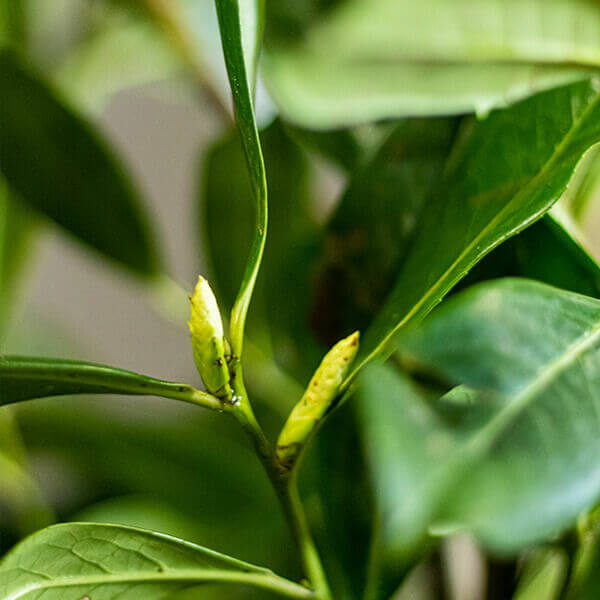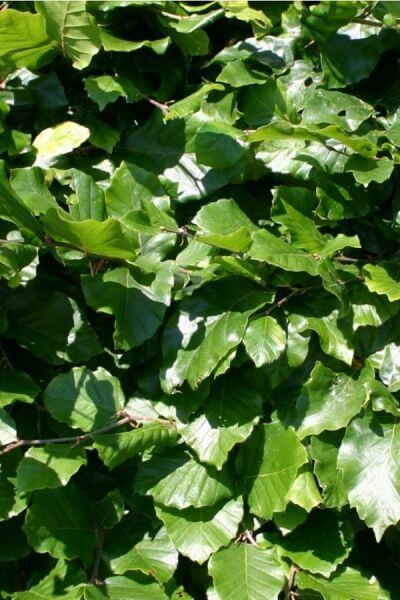Hedge Plants For Mixed Plantings
Hedge Plants For Mixed Plantings
Blog Article
Hedge Plants For Garden Edges
Enhance your garden's attraction with rich hedge ranges such as Yew (Taxus), Thuja, Laurel, Photinia, and Bamboo, celebrated for their structural integrity and ecological benefits.
Yew and Thuja supply evergreen coverage and winter strength, while Laurel provides quick growth and broad, fragrant leaves.
Photinia includes seasonal beauty with its vibrant red foliage, and Bamboo provides a low-maintenance, tranquil ambiance.
These hedges improve air quality, minimize sound, and create tranquil, personal areas.
Proper planting, spacing, and maintenance make sure vigorous growth and eco-friendly harmony.
Explore how these lavish ranges can elevate your garden's charm and wellness.
Secret Takeaways
Transform Your Garden With Lush Hedge Ranges
- Select Yew for its thick, evergreen development and unrivaled longevity.
- Select Laurel for its quick development and broad leaves, ensuring fast personal privacy.
- Pick Photinia for its dynamic seasonal foliage, which turns a striking dark red.
- Make use of Bamboo for a low-maintenance, winter-hardy hedge with visual appeal.
- Area plants 2-3 per meter and prune regularly for optimal growth and health.
Popular Hedge Plants
When changing a garden with lavish hedge ranges, it's vital to think about popular hedge plants such as Yew, Thuja, Laurel, and Photinia due to their distinct attributes and benefits.
Yew (Taxus) is extremely esteemed for its longevity and thick, green growth, making it a prime option for enduring landscapes.
Thuja is noted for its evergreen foliage and robust winter season strength.
Photinia adds seasonal vibrancy with red leaves that darken with time, creating dynamic visual appeal.
Laurel offers rapid growth and fragrant, broad leaves, perfect for quick personal privacy.
Additionally, Bamboo is an exceptional choice for ambiance, providing a low-maintenance, winter-hardy alternative that improves the garden's visual with its elegant, swaying walking sticks.
These choices deal with a range of horticultural needs and choices.
Benefits of Garden Hedges
Garden hedges provide a plethora of advantages, making them an important addition to any landscape. These natural barriers are affordable to implement and offer substantial wind protection, improving air blood circulation and adding to noise decrease. The thick foliage of hedges like Thuja and Beech makes sure personal privacy by blocking exposure, producing a peaceful and secluded environment.
Hedges likewise play a vital function in microclimate policy, offering a stable environment that fosters plant development and lessens temperature fluctuations. Their detailed leaf structures filter contaminants, enhancing air quality and contributing to a much healthier garden community.
Additionally, hedges master sound reduction, absorbing and deflecting acoustic waves to lower ambient noise levels. This dual performance of providing both acoustic and visual personal privacy improves the total serenity and aesthetic appeal of any garden.
Planting and Upkeep Tips
For an effective hedge, careful preparation of the planting area is important. Ensure the soil has proper pH and drain to support strong root development.
Area the plants properly for the selected types. Water the hedge frequently during its initial development stage, adjusting as needed with seasonal modifications.
Carry out a systematic pest control and disease prevention method, utilizing natural or chemical treatments when essential. Regularly inspect for aphids, mites, and fungal infections.
Apply mulch to keep moisture and suppress weeds. Seasonal pruning promotes thick growth and air flow, essential for plant health.
Following these guidelines will help you cultivate a vibrant, well-kept hedge that boosts the appeal of your garden.
Spacing and Trimming Standards
Spacing and Trimming Guidelines
Correct spacing and cutting are important for cultivating healthy, visually appealing hedges. Adequate spacing guarantees each plant receives sufficient nutrients, light, and air flow.
Follow these guidelines for optimal hedge upkeep:
- Spacing: Position hedge plants 2-3 plants per meter to motivate robust development.
- Pruning Methods: Regular pruning is vital for preserving desired hedge height and shape. Trim brand-new growth in summer season and cut down older wood during winter season.
- Seasonal Care: Adjust cutting approaches and schedules according to seasonal requirements to make sure plant health.
- Hedge Height: Frequently display and trim to preserve the preferred hedge height and attain uniform aesthetic appeals.
Abiding by these actions will guarantee your hedge thrives, enhancing both the appeal and functionality of your garden.
Choosing the Right Hedge
Choosing the Right Hedge
Picking the suitable hedge involves examining aspects such as mature height, foliage density, and ecological durability. Effective hedge plant selection needs comprehending each species' development qualities and site-specific adaptability.
For instance, Yew (Taxus) provides excellent durability and dense development, while Thuja is noteworthy for its winter season durability. Additionally, thinking about maintenance requirements is important; fast-growing species like Laurel or Privet need regular trimming, whereas low-maintenance options like Bamboo or Ivy might be more suitable for those seeking very little upkeep.
Ecological aspects such as soil type, light accessibility, and wetness conditions ought to likewise guide the choice procedure. This careful technique ensures the picked hedges will thrive, offering both visual and functional benefits to the garden landscape.
Delivery and Planting Advice
To ensure your hedge plants flourish, they should be provided by specialized couriers and planted immediately upon arrival.
Follow these necessary steps for successful planting:
- Soil Preparation: Enhance the soil with natural matter to improve drainage and nutrient content.
- Planting Depth: Develop a trench twice the width and equivalent to the depth of the root ball.
- Watering Strategies: Water completely after planting, keeping the soil consistently damp however not filled.
- Mulching: Use a layer of mulch to retain moisture and suppress weeds.
Client Assistance and Service
Given the essential function of prompt help in horticultural pursuits, our consumer assistance team is offered 6 days a week through telephone, e-mail, and social networks to offer expert guidance and quickly attend to any issues. Their commitment to fast action times guarantees client fulfillment by solving questions related to plant health, optimal planting methods, and upkeep schedules.

-----------------
6 days a week
Within 24 hours
This extensive support group, enhanced by a stellar 9.3/ 10 customer rating, highlights our commitment to improving the gardening experience for each customer.
Often Asked Concerns
The Length Of Time Does It Consider Hedge Plants to Develop?
Hedge plants usually need one to 3 years to end up being totally developed, with the precise duration varying by types and growing conditions.
Reliable care throughout this vital period is essential for robust development. Consistent watering, vigilant weed control, and proper fertilizer application are critical in promoting strong root development.
For instance, fast-growing types like Laurel may develop faster, while slower-growing ranges such as Yew may take longer. Persistent maintenance speeds up the establishment procedure, resulting in thick and healthy hedges.
What Are the Best Hedge Plants for Personal Privacy?
The question of the best hedge plants for privacy includes assessing evergreen and deciduous alternatives.
Evergreen hedges like Thuja, Laurel, and Cypress offer year-round protection, ensuring constant personal privacy.
On the other hand, deciduous hedges such as Beech provide seasonal privacy, shedding leaves in cooler months.
Secret maintenance pointers for personal privacy hedges include routine trimming, fertilizing in spring, and proper spacing-- normally 2 to 3 plants per meter.
Furthermore, consistent watering and thorough weed removal are crucial for promoting healthy, thick growth.
Can Hedge Plants Bring In Wildlife to My Garden?
Yes, hedge plants can draw in wildlife to your garden by providing vital benefits like shelter, food, and nesting websites, thus enhancing regional biodiversity. For instance, yew, holly, and laurel are exceptional for attracting birds, while ivy supports a range of insects.
However, it is necessary to note that there are some drawbacks, such as increased maintenance to handle bugs and regular maintenance. Carefully choosing and keeping hedge varieties can assist stabilize these drawbacks and benefits, ultimately cultivating a sustainable and dynamic environment in your garden.
Are There Any Flowering Hedge Plants Available?
Yes, there are flowering hedge plants readily available that can boost the beauty of your garden.
For instance, Elaeagnus, likewise referred to as Olive Willow, produces fragrant white flowers in the fall, adding a touch of sophistication.
Photinia, another popular option, showcases vibrant red leaves that develop into a rich green, producing a vibrant visual effect throughout the seasons.
To hedging plants guarantee these plants prosper, it's necessary to practice proper pruning methods and seasonal maintenance, such as cutting brand-new development in the summer season and cutting back in the winter.
These measures will help keep the health and visual appeal of your flowering hedges.
How Do I Prevent Pests in My Hedge Plants?
To prevent pests in hedge plants, employ natural pest control techniques and preserve appropriate hedge care. Present useful pests like ladybugs, which victimize damaging bugs, to develop a well balanced community.
Frequently check your hedges for indications of infestation and quickly get rid of any affected parts to prevent the spread. Ensure the health of your hedges by applying balanced fertilizers and supplying appropriate water.
Use mulching to keep soil moisture and appropriate spacing to minimize plant stress and promote robust growth. These practices collectively assist in decreasing bug problems and preserving a healthy hedge.
Conclusion
In essence, choosing the ideal hedge ranges such as Yew, Thuja, and Laurel can transform any garden into a tranquil sanctuary. These plants offer year-round greenery, enhance visual appeal, and offer practical advantages like noise decrease and wind security.
Appropriate planting techniques, precise spacing, consistent watering, and seasonal cutting are crucial for optimal development.
Reliable shipment services and professional customer assistance ensure a smooth experience from purchase to planting, making it simpler than ever to raise your outside space.
Garden hedges use a wide variety of benefits, making them an important addition to any landscape. These natural barriers are affordable to carry out and offer considerable wind security, enhancing air blood circulation and contributing to noise decrease. The dense foliage of hedges like Thuja and Beech guarantees personal privacy by obstructing presence, creating a tranquil and secluded environment.

Pruning Methods: Regular pruning is important for maintaining wanted hedge height and shape. Cut new growth in summer season and cut back older wood throughout winter.
Report this page